Chapter 4
Considering Email Marketing
IN THIS CHAPTER
 Reviewing types of marketing email
Reviewing types of marketing email
 Building a promotional calendar
Building a promotional calendar
 Writing and designing marketing email
Writing and designing marketing email
 Making your emails deliverable
Making your emails deliverable
Imagine that it’s seven o’clock on a Tuesday morning. You wake up to the beeping of your alarm, roll out of bed, and stumble to the kitchen, where the coffee that you programmed to brew last night is just finishing its drip cycle. You grab a mug, add some cream and a tiny sprinkle of sugar, and sit down at the kitchen table. Then you check your email.
If you’re anything like most adult Americans, this routine may be familiar. Email is not only part of daily routines, but also one of theprimary sources of information. It probably isn’t a surprise to you that email has a higher return on investment than any other channel by far. In fact, email returns an average 4,300 percent return on investment for businesses in the United States.
Email plays an important role in digital marketing because it helps move customers from one stage of the buyer journey (see Book 2, Chapter 3 for more on the buyer journey) to the next in a way that yields high return on investment. Because email is both cost effective and time effective, not to mention one of the first channels that most customers turn to, this channel often yields the best results.
In this chapter, you see how to create an email plan that gives your customers a reason to come to you again and again as you grow your business through dynamic, relationship-based marketing.
Understanding Marketing Emails
To start, it’s important to understand the types of marketing emails that businesses send. The key to success in email marketing is employing the right type of email at the right time.
Figure 4-1 shows the goals of three types of emails — promotional, relational, and transactional — and how they’re used in marketing strategy.
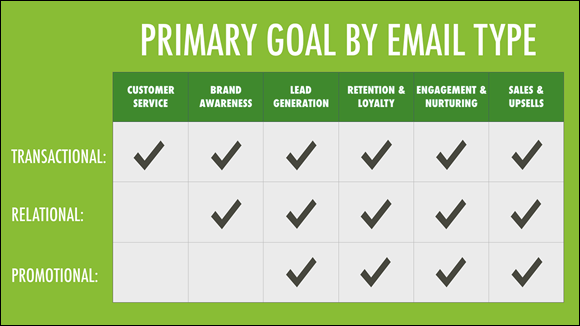
FIGURE 4-1: The primary goals of each email type.
Promotional emails
Promotional emails present the leads and customers on your email list with an offer. The offers could be promotional content, a gated offer like a whitepaper or webinar (see Book 3, Chapter 3 for more on gated offers), a brand announcement, product release, event announcements, or trial offers, just to name a few.
Promotional emails are the most common marketing emails. This isn’t surprising. Because 66 percent of consumers have made a purchase as a direct result of an email marketing message, promotional emails work.
Relational emails
Relational emails deliver value to your customers by providing free content and information such as subscriber welcomes, newsletters, blog articles, webinar guides, surveys, social updates, contest announcements, and more.
Relational emails may not sell a product or brand directly, but they build relationships with the customer by adding value upfront. For example, when your email subscriber receives a piece of high-quality content in an email newsletter, he or she is interacting with your brand in a deeper, more meaningful way.
Transactional emails
Transactional emails are sent in response to an action that a customer has taken with your brand. They include messages such as order confirmations, receipts, coupon codes, shipping notifications, account creation and product return confirmations, support tickets, password reminders, and unsubscribe confirmations.
These emails reengage customers who have engaged with your business in some way (see “Reengagement campaigns,” later in this chapter) and give the customer an idea of the voice behind your brand.
Do you follow up quickly and deliver what you promised? Do you have systems in place that give the customer true value? Do you respect your customers’ wishes? The leads and customers on your email list are observing how you conduct business, and your transactional email is a big part of that.
Transactional emails meet all the primary goals of marketing. They offer a customer service experience, tell customers about your brand, generate leads, increase customer retention and loyalty, engage customers, and even help with sales. Yet most businesses rarely use transactional emails properly, mistakenly assuming that promotional and relational emails are more effective.
Research shows, however, that transactional emails have the highest open rates of the three types and produce 2 percent to 5 percent more revenue than standard bulk email does. This produces a fascinating conclusion: Transactional emails are chemically more likely to be successful (see the nearby sidebar “The chemistry of transactional emails”).
Sending Broadcast and Triggered Emails
Email best practices say that you shouldn’t just send every email to every subscriber on your list, and time management best practices say you can’t spend every day manually sending emails to customers. For these reasons, your emails should be divided into two types: broadcast and triggered.
Broadcast emails
Broadcast emails are emails that you manually send to your entire list at a given time. They aren’t responses to customer actions; you send them at a specific time and for a specific purpose. Overusing broadcast emails can hurt your customer relationships and cause customers to stop proceeding on the buyer journey. Broadcast emails should be used for only three purposes:
- Newsletters: You should send your regular daily, weekly, or monthly email newsletter to your entire list as promised when your subscribers subscribed.
- Promotions: Not all promotions should be broadcasted to your entire audience. Only major promotions that you feel deliver value to your entire customer base should be sent to everyone. The rest should be sent to a segmented list (see the next point).
- Segmentation: Send a broadcast email to your entire list to determine the specific interests of certain customers and then segment your email lists.
Triggered emails
Most of the emails that you send should be triggered emails, which are fully automated. After you get the content honed and ready, you can let your email service provider do the work for you.
Triggered emails automatically go out after customers take a specific action. But there’s a catch: Just because you can trigger something doesn’t mean you should. In this day of detailed digital automation, you can probably get data to trigger an email every time your customer logs on to a computer or pours a cup of coffee. But that would just annoy your customers. Specific actions that trigger an automated email for each customer action might include
- New subscriber welcome email
- Gated offer email (see Book 3, Chapter 3 for more on gated offers)
- Registration confirmations
- Purchase receipts
- Segmented promotion
- Referral requests after customers leave a review
- Abandonment of a shopping cart
- Reengagement after a subscriber has ignored your brand emails for a specific period
Building a Promotional Calendar
The first question many business owners ask is when to send email. This question is a good one because a great email campaign will engage customers like never before if it’s sent at the right time. Conversely, if an email is sent at the wrong time, it won’t be as effective as it could be.
The first thing you should do as a business owner or marketer after you decide to start an email marketing strategy is come up with a promotional calendar. That way, you’ know when to send the messaging your customers need when they want to receive it.
Cataloging your products and services
Before you can build an accurate, all-encompassing promotional calendar, you have to know exactly what you’re promoting. Spend some time carefully cataloging every product and service that your business offers and taking some time to understand how to promote it best. DigitalMarketer, uses a promotional asset sheet (see Figure 4-2) to keep a detailed record of their assets. Every time they release a new asset, they add an asset sheet to their list. And every time they update their promotional calendar or run an email campaign, they spend some time updating their asset sheets.
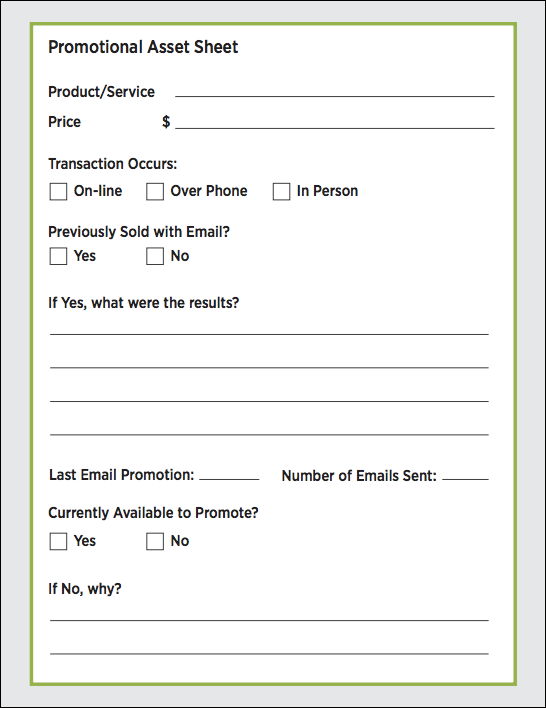
FIGURE 4-2: A promotional asset sheet.
Be sure that whatever record you keep of your promotional assets contains the following information:
- Name of the product or service
- Price (both full price and sale price)
- Where the transaction occurs
- Whether you’ve sold this product or service via email before
- Whether past marketing efforts worked (and why or why not)
- When you last promoted this product or service
- How many emails you sent about this product
- Whether the product is currently available to promote (and if not, why not)
You may be wondering why you should spend so much time cataloging your marketing efforts. Wouldn’t that time be better spent, perhaps, marketing those assets? The truth is that by carefully tracking the sales of your products, as well as the marketing campaigns that correspond with your sales, the job of marketing those assets becomes much easier. When you know what you have available to sell and the results of the promotions you've employed in the past, you can simply do more of what's working and less of what isn't.
The time you spend cataloging and analyzing these assets and the campaigns surrounding them is valuable marketing time. All marketers should gather the promotional assets from all the products and services they offered so that they know exactly what they can sell, how they can sell it, whom to sell it to, and (perhaps most important) when to sell it.
Creating an annual promotional plan
After you catalog your assets, create an annual promotional plan. This plan aligns your 12-month revenue goals with your annual promotions and marketing efforts to help you reach your goals. Figure 4-3 shows a sample worksheet.
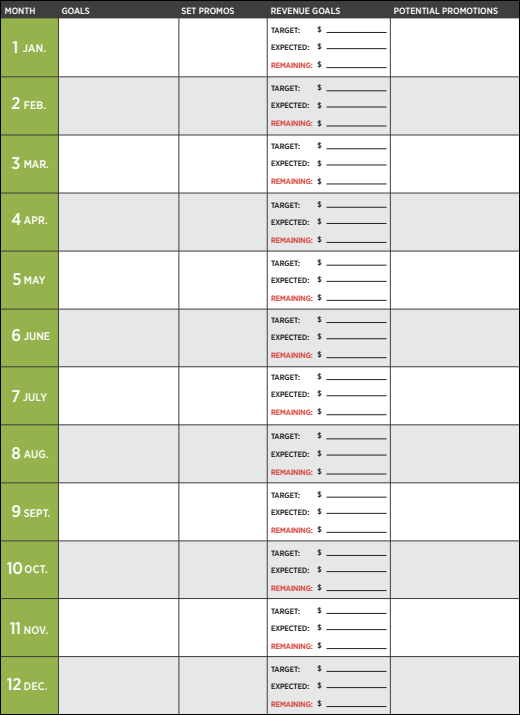
FIGURE 4-3: An annual promotional planning worksheet.
Developing a marketing plan
Creating and developing an annual marketing plan takes some time, but after it’s done, you have a solid framework for building your promotional calendar. Follow these steps:
-
Write your 12-month revenue goals.
Consider your target revenue goals, and figure out where you want to be each month to reach those goals.
-
List your nonrevenue goals.
This list could include nonrevenue growth opportunities such as the launch of a blog or podcast, the release of a book, or the opening of a new location.
-
Slot holiday promotions into the appropriate months.
For many retail businesses, November and December are key sales times and thus require strategic marketing. Other businesses may have peak promotion at varying times, such as before a major conference or during a certain season.
-
Slot annual promotions into the appropriate months.
These promotions may include major sales, product releases, or events.
-
Denote seasonality.
Every business has slow and busy months, so note those months in your plan so that you can build appropriate promotion during those times.
-
Slot nonrevenue goals into the appropriate months.
Are you planning to release a new book or launch a new blog in March? You need space on the promotional calendar for these nonrevenue initiatives.
-
Break your revenue goals into monthly allotments.
Keep seasonality in mind (see Step 5).
-
Add your standard revenue projections.
Include promotional efforts, major events, standard rebilling contracts, and subscriptions.
-
Subtract your expected revenue from the target revenue.
After doing this, consider how you can fill in the remaining revenue needed. This step is where your marketing efforts come into play.
-
Brainstorm additional promotional ideas that could generate the revenue you need to reach your goals.
Will you need to add new products or services to promote to reach your target revenue? Can you find new ways to offer the existing products and services you already have?
-
Spot-check and adjust.
Ask yourself whether your calendar helps you meet your goals in a way that will be both effective and practical.
-
List additional items that you need to meet your target.
You may need to launch a new product or service, or to create a sales presentation, for example.
Creating a 30-day calendar
The next step is to get down into the nitty-gritty of what you’re going to do for the next 30 days.
A promotional campaign should have three goals:
- Monetization: Making money or making a sale
- Activation: Moving your customer forward on the buyer journey
- Segmentation: Becoming more aware of customers’ needs and desires so you can segment your list and deliver value
For your first 30 days, you set one of these promotional goals for each week and reserve the fourth week for a wildcard campaign. A wildcard campaign gives you the chance to try something new, get creative, test new ideas, or try to replicate your most successful campaigns.
You can use a monthly planning worksheet (see Figure 4-4) so that you can easily track which promotions you’re running and how they do. You might also plan a backup promotion for each campaign in case the primary campaign falls, so that you still reach revenue goals regardless of how the campaigns perform.

FIGURE 4-4: A 30-day promotional planning worksheet.
Creating a 90-day rolling calendar
When your 30-day promotional plan is up and rolling, you can plan a bit farther in advance with a 90-day rolling calendar. This calendar is called a rolling calendar because by repeating similar promotions every 90 days or so, you keep your customers informed and engaged without making the same offers with the same campaign goals over and over again.
Creating Email Campaigns
How do you create email campaigns that move your customers along the buyer journey in a way that creates long-term brand engagement? And how do you do so without spamming or annoying your customers the way so many brands can do? This section walks you through five types of email campaigns so that you know how to build email campaigns that will work for your business.
A campaign structure page (like the one in Figure 4-5) will help you keep track of each campaign and the purpose of each email in the campaign.
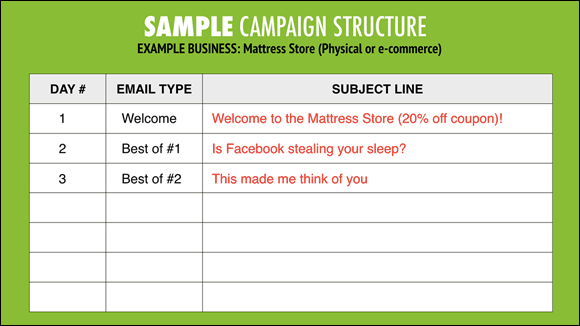
FIGURE 4-5: A sample campaign storyboard.
Indoctrination campaigns
An indoctrination campaign is a triggered campaign sent immediately following an initial subscription. This campaign is designed to teach new subscribers about your brand and convince them that they've made a good decision by joining your email list and, by extension, becoming a part of your community. See Figure 4-6 for an example of an indoctrination email.
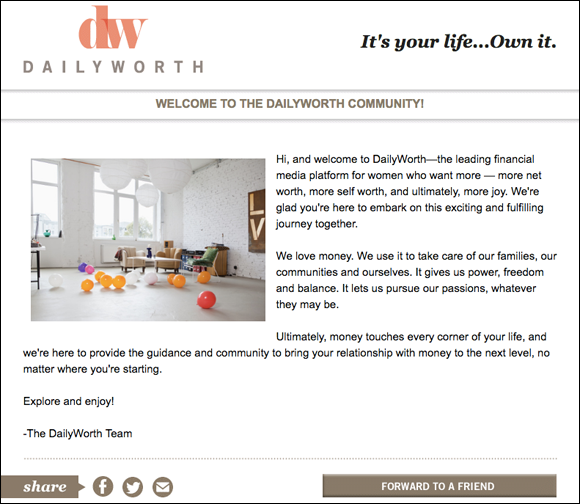
FIGURE 4-6: An example indoctrination email that welcomes a new subscriber.
Customers don’t sign up for your email lists on a whim. Instead, they probably were introduced to your brand and then considered the value of your email list. Perhaps they were given the opportunity to get value in advance with a gated offer. (Learn more about gated offers in Book 3, Chapter 3.) Or perhaps they were signed up as they made a purchase or engaged with your website. In all cases, an indoctrination campaign reaffirms positive action and shows your customers that they made the right choice.
The fact that customers made a positive choice to join your email list, however, doesn’t mean that they’re fully engaged with your brand. They don’t know you well enough to be anticipating your every word. They may not recognize your name in their inbox and are still unsure about the value they can expect from you.
A carefully crafted indoctrination campaign can help move customers down the path of their buyer journeys. (See Book 2, Chapter 3 for more on the buyer journey.) In the aggregate, when you add an indoctrination campaign, you see a positive effect on the open and click-through rates of the email you send to these subscribers in the future because they know, like, and trust you better.
Indoctrination campaigns generally run one to three emails and introduce customers to the brand on a deeper level. These campaigns help you put your best foot forward with new subscribers, introducing them to who you are and what you stand for.
Your indoctrination campaign should do the following things:
- Welcome and introduce new subscribers to your brand.
- Restate the benefits of being a subscriber.
- Tell subscribers what to expect.
- Tell subscribers what to do next.
- Introduce subscribers to your brand voice or personality.
Engagement campaigns
An engagement campaign is an interest-based, triggered campaign sent immediately following a subscriber action. It’s designed to make a relevant offer and potentially a sale to subscribers. The role of an engagement campaign is to turn subscribers into converts by prescribing the next logical step based on what you know those people are interested in.
Before you craft an engagement campaign, ask yourself two questions:
- What next step do you want your customer to take? You may want her to make a purchase, opt in to a gated offer, or engage with your brand on your website.
-
Do you believe that the customer is ready to take that next step? If the customer isn’t ready, you only annoy and alienate her if you push her to take that step.
 Sometimes it does hurt to ask — especially when you’re asking too much too soon from a valuable customer.
Sometimes it does hurt to ask — especially when you’re asking too much too soon from a valuable customer.
Your engagement campaign should do the following things:
- Turn subscribers into converts. A conversion might be buying a product or service, scheduling an appointment, or registering for a webinar.
- Consider what the customer is interested in now and what will interest him next. Refer to your buyer journey and design your engagement campaigns to move the email subscriber to the next stage in that journey.
- Reference the previous positive action.
- Overcome or inoculate against known objections to converting.
- Prescribe the next logical step.
- Ask for an order or a next step.
Ascension campaigns
An ascension campaign is a triggered campaign sent immediately following a purchase to start the value loop designed to turn ordinary buyers into buyers who purchase from your brand again and again.
If a customer just bought a tent and four sleeping bags, for example, you could assume that she’s looking to head out to the campground, and you could send her a coupon code for a camp stove. If a customer just bought a subscription to a social media training event, you could offer him follow-up training on email marketing.
An ascension campaign is a great way to move customers along the buyer journey and build a long-term relationship with them. In an ascension campaign, you give customers what they want and then a bit more.
An ascension campaign should do the following things:
- Overcome or inoculate against known objections.
- Prescribe the next logical step.
- Increase the average value of customers by selling more to them, more often.
- Increase customer trust.
- Make customers ascend to fans.
Segmentation campaigns
A segmentation campaign is a manual campaign sent to your entire database as a promotion designed to segment your subscribers by interest.
Consider a small publishing company that sells high-interest nonfiction books to teachers and librarians. That company is releasing a series of science books on gardening and plant growth. The books have similar content, but some target early learners, others middle-school students, and still others high-school students. The marketing department, being wise and astute in the best practices of email marketing, decides to send a segmentation campaign. The department staff craft an email listing the books that are available, with clear guidance on what age level each book is appropriate for. Then the staff sends the email as a broadcast campaign to the company’s entire mailing list. This campaign makes the company’s entire list aware of the new product, and possibly more important, the resulting click data allows the company to segment the list by which subscribers are interested in early-learning content, which are interested in middle-school content, and which are interested in high-school content. Segmentation assures that each customer profile can be effectively targeted.
The marketing department can create audience segments and send additional emails that meet tcustomers’ exact interests. Figure 4-7 shows a segmentation email from Home Depot. The email lists six categories in which subscribers can get savings. When a subscriber selects one of these categories, the marketing team knows that this person responded to this email and clicked a particular product category. That person would then be segmented, and Home Depot would likely send follow-up emails on the product the subscriber selected.
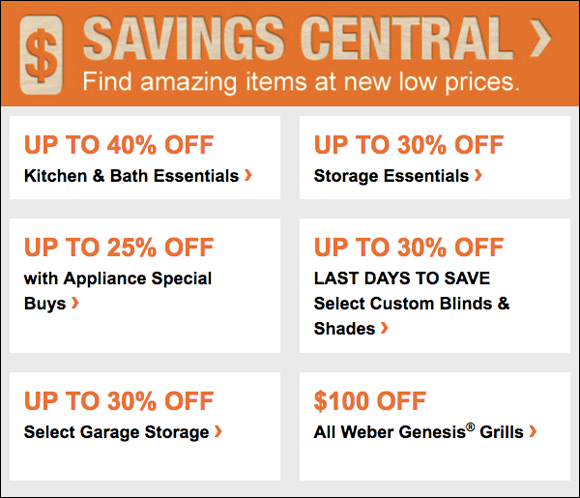
FIGURE 4-7: Example of a segmentation campaign email.
Reengagement campaigns
A reengagement campaign is a triggered campaign sent to any subscriber who has not opened or clicked an email in the past 30 to 60 days. This campaign is designed to reengage those subscribers with the brand. Perhaps subscribers got extremely busy and didn’t check their email diligently. They may have gone through life changes and now have different interests. Or maybe they got frustrated with you and chose to disengage. A reengagement campaign can help those customers get back on the buyer journey.
Figure 4-8 shows an effective reengagement email.
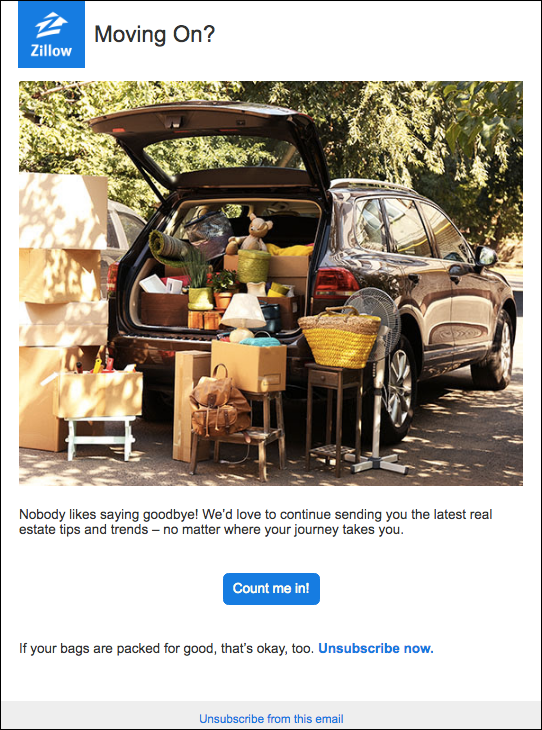
FIGURE 4-8: An example reengagement campaign.
Writing and Designing Effective Emails
If you want people to read your emails, you have to write and design emails that they want to read. But with thousands of companies writing and sending emails every day, you have to make your emails stand out.
Although email writing and design are art and not formula, this section lists a few tips to hone your copywriting and email design skills so that your messages stand out.
Harvesting proven email copy
Go into your own email account and check the last ten messages that you opened. Look at the copy and the design. Then ask yourself the following questions:
- Did the headline grab your attention?
- What hooks and leads did the copywriter use?
- What benefits of the product or service are mentioned?
- What proof or stories grabbed your attention?
- What was the call to action?
When you’ve read the emails that grabbed your attention, see whether you can use them as templates for emails that meet your own business goals. There’s no need to reinvent the wheel if it’s already been invented for you.
Answering four questions
To write great email copy, you have to figure out why a customer would engage with the promotion. Answer these four questions:
- Why now? Consider whether the promotion you have should offer new or on-sale items. Also consider whether it’s seasonal or timely; that is, whether it’s something that customers want or need now more than at another time.
- Who cares? Decide who in your target audience is most affected by having (or not having) what you’re selling.
- Why should they care? You need to let customers know how their lives will be different if they have your product or service.
- Can you prove it? Provide case studies, testimonials, or news stories to prove that your customers’ lives will be changed if they engage with your product or service.
Great email copy answers these questions in the body of the email in a way that clearly demonstrates to the customer the value of your promotion.
Knowing why people buy
People always buy things for a reason. By considering the reasons why people make purchases as you write email copy, you can hone in on what makes a customer click Buy. People generally buy things for four reasons:
- Personal gain: A product or service will help them reach personal goals or desires.
- Logic and research: Customers have done their research, and this product seems like a logical fit to meet a particular need.
- Social proof or third-party influence: Customers’ friends have told them that the product or service is great, and they want to be part of it, or they see a large number of people doing something and want to do it, too. Nothing attracts a crowd like a crowd.
- Fear of missing out: People have a genuine fear of missing an opportunity or of being the only person not to have something important.
Consider which of these motivations you think will drive your customers and then address that reason in your email copy.
Writing effective email subject lines
Because most people spend only three to four seconds deciding whether to open an email, the subject line is the most important piece of email copy you can write. A good subject line piques interest and entices a customer to open the email. Then your email body copy can do the rest to drive engagement.
Subject lines can be tough nuts to crack. One company has its marketing team write 25 subject lines for each email and then choose a favorite to use in the email campaign. This operation may be time consuming, but the company continually receives higher-than-average open rates for its industry and higher-than-average email engagement. You may not have the resources to write 25 full subject lines for each email, but it’s a good idea to consider several options for each send, especially triggered sends that you’ll use over time.
You can use three types of subject lines to give people different reasons to open an email.
Curiosity subject lines
Curiosity subject lines pique the interest of subscribers and encourage them to click to find out more. For example, Kate Spade, a clothing retailer, sent an email to its subscriber list with the subject line, Ready for your close up? That email contained an offer for Kate Spade's jewelry products and used a curious subject line to increase the number of people opening the email.
Benefit subject lines
Benefit subject lines clearly state the reason why subscribers should open the email and the benefits they receive for doing so. For example, OfficeVibe, a Software as a Service (Saas) company that helps managers measure the engagement and satisfaction of their employees, sent an email to their subscribers with the subject line, 38 Employee Engagement Ideas, which clearly states the benefit the subscriber will get by opening the email. The opposite of a benefit subject line is a warning subject line. For example, OfficeVibe also sent an email to its subscribers with the subject line, 11 Statistics That Will Scare Every Manager. This subject line type should be used sparingly, but, when appropriate, it can be very effective.
Scarcity subject lines
Scarcity subject lines cause subscribers to feel that they may miss out on something important if they don’t open the email and engage with it. For example, Home Depot sent an email to its subscribers with the subject line, Hurry! Labor Day Savings End Tonight to encourage subscribers to take advantage of its Labor Day sale before it was over.
Writing body copy
Copywriting isn’t a formula, but an art. It’s also true that through some formulaic chunking, you can create email copy quickly and effectively.
This chunking method is based on the answers to the questions in the “Answering four questions” section earlier in this chapter. By breaking your copy into four major chunks and allowing each chunk to answer one of the questions, you can ensure that your copy addresses the major points you’re trying to cover.
Each chunk of copy should have one link. That way, by the time customers read the entire email, they’ve had all their questions answered and have been given multiple opportunities to find out more by clicking a link.
Here’s how you chunk your email:
- Introduction: In this section, answer the question “Who cares?” by showing customers that they should care about this promotion and why.
- Body: Next, help your reader to answer the question “Why should they care?” by explaining the proven benefits or results of the product or service.
- Close: The close of your email is a great time to answer the question “Why now?” Tell customers, if it applies, that they have a limited time to engage with the promotion.
- P.S.: A postscript is a fantastic place to answer the question “Can you prove it?” by sharing social proof such as a testimonial, positive review, or story of a customer whose life has been changed by the product or service.
Cuing the click
You’ve written a killer subject line. You’ve chunked up your copy beautifully, and each chunk contains a relevant link. You have a product or service that you believe in. You’re 99.4 percent of the way to your goal. But you still have one more thing to do: You have to cue the click by asking people very clearly to perform the action of clicking.
Here are a few methods that may be effective for you:
- Pose a benefit-driven question. Example: “Would you like to learn to grow tomatoes indoors? Click <link> to find out.”
- Connect proof with product. Example: “Our customers are able to grow 20% more winter tomatoes using our Indoor Tomato Trellis! See how it works here: <link>”
- Show the “After.” Example: “When you have the Indoor Tomato Trellis, you’ll enjoy ripe tomatoes picked from the vine even in the coldest winter months. Get the Indoor Tomato Trellis here: <link>”
- Present a takeaway. Example: “This is your last chance to get the Indoor Tomato Trellis at 35% off: <link>”
Getting More Clicks and Opens
When you go through your inbox, you probably pay close attention to only a few emails — maybe 10 percent.
What went wrong with the 90 percent of emails that you didn’t engage with? Maybe they didn’t have great copy or design, or you didn’t like the sender’s products or services. Maybe you don’t have a trusted relationship with the senders, and those emails just got lost in the sea of emails in your inbox.
You have about three to four seconds to grab your reader’s attention, so a great subject line, perfect copy and design, and an awesome promotion aren’t always enough. That may seem a bit unfair.
To get you over this final hump, here are some tips to give your emails an extra boost:
- Get the timing right. Send your emails at times when others aren’t sending email. Then your emails will stand out in people’s inboxes and get a higher open rate. DigitalMarketer found that the best times to send emails are from 8:30 to 10 a.m., 2:30 to 3:30 p.m., and 8 p.m. to midnight.
- Call people by name. Research shows that emails with a first name in the subject line garner a 23 percent higher open rate. That’s an amazing boost, but don’t use this trick too often. It loses its effectiveness if overused.
-
Be positive in the morning and negative at night. We all wake up bright-eyed and excited to face the new day (okay, after coffee). Take advantage of that fact by sending positive email messages during the morning hours. In the evenings, negative messages are better accepted.
 If you’re going to send a negative message — perhaps about a declining market or an urgent need — make sure that you offer a solution to the problem as part of your email. No one likes to be made to feel hopeless.
If you’re going to send a negative message — perhaps about a declining market or an urgent need — make sure that you offer a solution to the problem as part of your email. No one likes to be made to feel hopeless. - Be controversial or relevant. Stand out in the inbox by bringing up controversial topics (even if you worry that some of your subscribers won’t agree with you) or relevant content.
-
Use odd or specific numbers. Everyone has ten tips for doing just about everything. Try using different numbers: “6 ways to change your business tonight,” “14 simple ideas to teach your child math,” or “The $234,423 idea that changed everything,” for example.
 Never round up your numbers. Doing that makes you sound like a liar. If you have only nine amazing ideas for holiday décor, say you have nine amazing ideas. Saying that you have ten and then delivering only nine makes you look dishonest.
Never round up your numbers. Doing that makes you sound like a liar. If you have only nine amazing ideas for holiday décor, say you have nine amazing ideas. Saying that you have ten and then delivering only nine makes you look dishonest. - Keep your subject line short. The best subject lines have six to ten words, or 25 characters. Short subject lines are easy to read and view on a smartphone while still piquing customer interest.
- Use a second subject line. Most email providers have a second area of displayed content on every email. In many email systems, this area is referred to as the description, but if it’s left blank, it defaults to the first line of copy. Instead of accepting the default, write a second, short, strong subject line and place it in the description section to tell your customers more about your email’s content.
- Press Play. Instead of including a link, embed a still image of a video with a Play button superimposed on top. This technique can dramatically increase click-through rates in email campaigns.
- Ask customers for their thoughts. This strategy results in the highest click-through rate of all campaign types. This strategy involves asking a question and listing four to five answers, each with a link (see Figure 4-9). All the links go to the same place, where customers can find answers to the questions.
-
Combine video and questions. Video consistently yields high click-through rates and high customer engagement. Include a video and a “your thoughts” question in an email, and have subscribers watch the video to get the answer.
 Many marketers worry that they don’t have the charisma or budget to make highly professional video. Don’t be afraid! Because email is about relationships, a simple conversational video can show your personality and voice to your subscribers, and allow you to connect with them in a new way.
Many marketers worry that they don’t have the charisma or budget to make highly professional video. Don’t be afraid! Because email is about relationships, a simple conversational video can show your personality and voice to your subscribers, and allow you to connect with them in a new way. - Add a countdown. Phrases like “Four days until this sale is over forever!” and “You’ll never get this deal again!” increase the urgency of the promotion. You can increase the urgency even more by adding a countdown clock or timer to show customers exactly how much time they have.
- Use animated GIFs. Pretty or funny moving images in an inbox catch people’s attention. If you have access to a designer who can make custom animated GIFs, have that person create some for you. If not, sites like Giphy (
http://giphy.com) offer free GIFs that you can use to give your emails an extra edge.
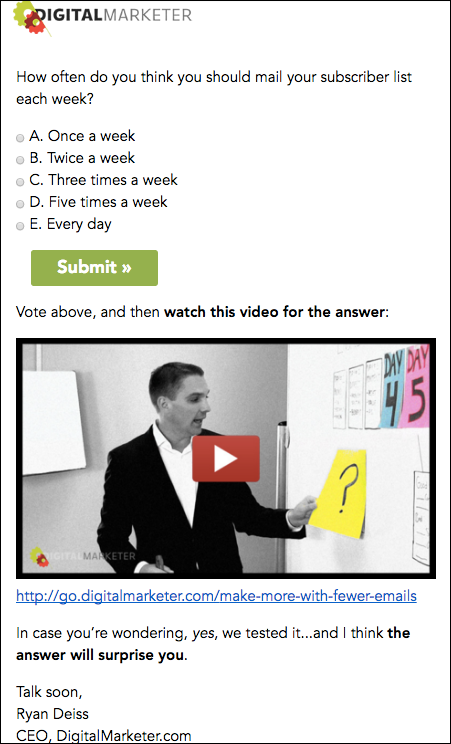
FIGURE 4-9: An example of a “Your Thoughts?” email that engages the audience.
Ensuring Email Deliverability
Everything discussed so far is moot if your emails aren’t reaching your subscribers’ inboxes. Did you know that 21 percent of emails worldwide never reach the desired recipients? A whole lot of work, effort, and brilliance are being wasted on emails that end up floating around in cyberspace.
How do you make sure that all your work isn’t wasted? It comes down to one simple thing: You have to prove that you aren’t a spammer and that you have no intention of being one.
Sadly, the Internet service providers responsible for determining whether you’re sending spam consider bulk mailers to be guilty until proven innocent. They assume that emails are spam from the outset, and until you can show them that you don’t act like a spammer, your email deliverability will be affected.
The following sections provide some methods for improving deliverability. Most of these methods are very technical. If you’re a tech wizard, go forth and set up your infrastructure to ensure deliverability. If you need help with technical stuff, find a local tech person or call your email service provider, and get some systems in place to ensure that your emails reach the people you want to reach.
Monitoring your reputation
To ensure deliverability, you have to keep track of how you’re interacting with your list. Do the following things:
- Monitor the complaint rates and the volume of complaints you're receiving. Your email service provider should provide reporting capabilities on the number and rate of complaints your emails are receiving.
- Respond to complaints in a timely manner.
- Make sure that you unsubscribe and stop sending email to anyone who unsubscribes. Your email service provider should provide a path to unsubscribe from every email and automatically remove those that unsubscribe from your email list.
- Keep your message volume steady. Don’t send a million emails one month and then none for six months.
- Check your blacklist status on the major blacklist sites including Spamhaus (
https://www.spamhaus.org/) and Spamcop (https://www.spamcop.net/). These major blacklist sites are referenced by mailbox providers like Google's Gmail to help them determine whether your email should be delivered to the inbox. Each blacklist has its own process for removal from its blacklist; you can find this information on its website.
Proving subscriber engagement
The best way to assure the Internet service providers that you’re not a spammer is to prove that you engage your subscribers with every single email you send. If people are opening your emails, reading what you have to say, and then clicking relevant links, you aren’t a spammer.
Subscriber engagement rates are based on the following factors:
- Your open rate: This rate isn’t the number of emails that are opened, but the percentage.
- Your lateral scroll rate: This rate is how far recipients scroll down on your emails.
-
Your hard and soft bounce rate: A bad email address is considered to be a hard bounce. A soft bounce can happen for many reasons, including a full inbox or accidental flagging as spam.
 If you continue to send emails to addresses that reject your mail, you look like a spammer.
If you continue to send emails to addresses that reject your mail, you look like a spammer. Export your entire list and send it to a company called BriteVerify (
Export your entire list and send it to a company called BriteVerify (www.briteverify.com/). This company runs an analysis of your list and tells you which addresses are definitively good, which ones are questionable, and which are bad. If you expunge the questionable and bad emails from your list, you’re practicing good list hygiene and increasing deliverability. - Unsubscription and complaint rates: If you receive high numbers of unsubscriptions or complaints, examine your campaigns to see whether you’re doing something to upset subscribers.
 You can only send email to those people with whom you have a prior business relationship. For more information about the specifics, check out the CAN-SPAM act at
You can only send email to those people with whom you have a prior business relationship. For more information about the specifics, check out the CAN-SPAM act at